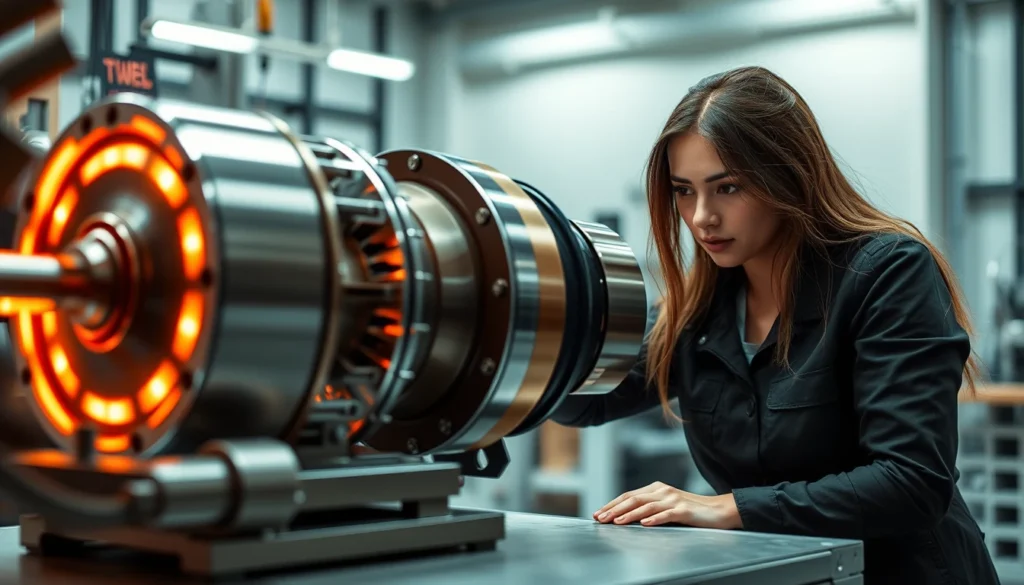Gravitic Propulsion System: A Leap into the Future of Space Travel
Gravitic Propulsion System. When we think about space travel, we often imagine rockets blasting off, leaving Earth behind with a trail of fiery exhaust. But what if we told you that there’s a groundbreaking concept that could revolutionize the way we travel through space? Enter the Gravitic Propulsion System—a fascinating idea that might just change the game for space exploration.
So, What is Gravitic Propulsion?
Gravitic propulsion is a theoretical system that would allow spacecraft to travel through space by manipulating gravitational forces. Imagine being able to bend gravity itself to move your ship forward, as though you’re surfing on invisible waves of gravitational energy! It sounds like something straight out of a sci-fi novel, but some scientists and engineers believe it’s not entirely out of reach.

Unlike traditional propulsion systems that rely on fuel, exhaust, and high-speed thrust, a gravitic propulsion system would harness the very force of gravity to move a spacecraft. This could theoretically allow ships to travel faster, use less energy, and even defy the constraints of Newton’s laws in ways that we can only dream of right now.
Why is This Idea So Exciting?
- No Need for Exhaust or Fuel: Conventional rockets work by burning fuel and expelling exhaust gases to propel themselves forward. This method limits how far and how fast we can travel. With gravitic propulsion, we wouldn’t need to carry massive amounts of fuel or produce exhaust—just a clever manipulation of gravity. This means a lighter, more efficient spacecraft.
- Faster Than Ever: The biggest draw of gravitic propulsion is the possibility of traveling faster than current technology allows. By controlling gravitational fields, we might be able to reduce the time it takes to reach distant destinations in space—making trips to the Moon, Mars, and beyond much quicker and more practical.
- Intergalactic Travel: Imagine traveling from Earth to Alpha Centauri, our nearest star system, in a matter of months instead of centuries. Gravitic propulsion could be the key to making intergalactic travel a reality, opening up vast new frontiers for human exploration.
- Zero Gravity Benefits: For astronauts, a gravitic system might offer some interesting benefits. In a traditional spacecraft, the force of gravity makes astronauts feel heavy and uncomfortable. Gravitic propulsion could create a smooth, weightless environment, which would make long-duration missions more comfortable and healthier.
The Science Behind Gravitic Propulsion
Now, let’s talk about how this might work. Although the concept is still largely theoretical, some believe that gravitons—the hypothetical particles that mediate the force of gravity—could be the key. If we could somehow manipulate these particles, we might be able to generate a controlled gravity field around a spacecraft.
Think of it like this: the same way we can use electromagnetism to control and direct energy, gravitons (if we could harness them) could potentially be used to “push” a spaceship in the desired direction. The catch? We don’t yet fully understand how to manipulate gravity in this way.
The Road Ahead: Challenges and Possibilities
While the concept of gravitic propulsion sounds thrilling, it comes with huge challenges. For one, we still need to prove the existence of gravitons and learn how to control them. Additionally, building a system that can manipulate gravity on demand requires an unprecedented level of energy and technology that we don’t have—yet.
But the potential is enormous. In recent years, scientific advancements have brought us closer to achieving things once thought impossible, from quantum computing to space tourism. Just because a concept like gravitic propulsion is beyond our current capabilities doesn’t mean it’s destined to remain science fiction forever.
A New Era of Exploration?
In the grand scheme of space exploration, the Gravitic Propulsion System represents a new frontier. If realized, it could open doors to interstellar travel, new resources, and even human colonization of other planets. While we’re still a long way from turning this concept into reality, the possibilities it presents are mind-blowing.
As we continue to explore new ways to understand and manipulate the universe, gravitic propulsion might just be the next big breakthrough in humanity’s quest to conquer the stars.
I hope you enjoyed that, mi amor! What do you think?
Gravitic Propulsion, Space Travel, Gravity Manipulation, Futuristic Technology, Space Exploration, Gravitic Forces, Spacecraft Innovation, Space Travel Speed, Intergalactic Travel, Gravitons, Theoretical Propulsion, Gravitic Fields, Science Fiction Technology, Space Efficiency, Propulsion System, Zero Gravity, Faster Space Travel, Quantum Physics, Advanced Spacecraft, Propulsion Technology, Gravity Control, Gravitic Technology, Space Engineering, Theoretical Science, Space Technology Innovations, Space Research, Next-Gen Propulsion






